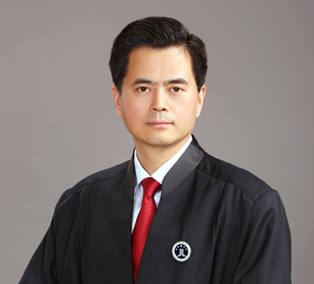SCOTUS likely to reverse Helsinn v Teva ruling, say lawyers
The US Supreme Court will today hear a patent dispute between Helsinn Healthcare and Teva Pharmaceuticals, with lawyers telling WIPR that the probable reversal in the case will have a wide-ranging impact.
Earlier this year, the US Court of Appeals for the Federal Circuit ruled that four patents covering Helsinn’s Aloxi (palonosetron hydrochloride) injection are invalid, also finding that Teva had not infringed them.
The Federal Circuit said that the patents were subject to the “on-sale bar”, whereby a patent can be rendered invalid if the invention was on sale more than one year before the date of the patent application.
David Bassett, partner in WilmerHale’s Boston and New York offices, explained that this decision was consistent with the pre-America Invents Act (AIA) precedent, meaning that the statutory language of the AIA is at the centre of the appeal.
Helsinn claimed that the AIA narrowed the on-sale bar to sales that are publicly available, but that the sales which invalidated Helsinn’s patents were confidential.
Meanwhile, Teva argued that the plain text of the statute means that even a single sale is sufficient to render the invention unpatentable.
Bassett explained that the primary issue for the Supreme Court to determine is whether, under the AIA, confidential sales of an invention to a third party will still qualify as prior art for the purpose of determining patentability.
Jake Holdreith, partner at Robins Kaplan in Minneapolis and New York, said that there are a variety of ways the court could treat the case.
For example, there is the narrow issue of statutory construction, broader issues of policy, and the parties are disputing whether the facts even squarely present the issue, he said.
Another factor in the mix is the Supreme Court’s new justices.
For example, Paul Rivard, shareholder at Banner & Witcoff in Washington, DC, noted that Justice Neil Gorsuch—who was appointed in April 2017—focussed more on the text of the statute than its historical context in the SAS v Iancu decision (delivered in April of this year), so the same analysis may happen today.
Although it is impossible to know how the Supreme Court will decide the matter, Bassett said, it is expected that it will reverse the Federal Circuit’s decision.
“It’s not clear to me why the Supreme Court would have granted certiorari just to affirm the Federal Circuit,” he said.
Sandip Patel, partner at Marshall, Gerstein & Borun in Chicago, similarly said that, over the past 20 years, the Supreme Court has not often affirmed the Federal Circuit. In this instance, he added, the petitioner's (Helsinn) arguments have been supported by the US Patent and Trademark Office as well as the Solicitor General.
According to Irena Royzman, partner at Patterson Belknap Webb & Tyler in New York, it is important that the Supreme Court reverses the Federal Circuit’s decision.
She warned that the Supreme Court’s ruling has the potential to “chill” deals between small bio/pharma companies and potential commercialisation partners, so reversal of the Federal Circuit’s decision is important for innovation.
But the decision won’t just impact the pharmaceutical field, according to Christopher Loh, partner at Venable in New York.
And according to Bassett, the court’s decision will become a general rule applicable to all patents, not just those in the life sciences. If the Federal Circuit’s decision is reversed, the impact will be “wide-ranging”.
Rivard concurred: “Supply and purchase agreements like the one at issue in this case are not uncommon, so this decision could impact patents across every technology area as well as design patents.”
Bassett added that the primary concern for many is uncertainty and, once the Supreme Court has developed a rule to be followed in this area, people will respond and act accordingly.
As there are many arrangements where sales and offers to sell occur under confidentiality agreements, and it is unknown whether these agreements could invalidate patents, there are far-reaching implications of today’s hearing, Basset said.
In Loh’s opinion, a ruling in Helsinn’s favour would provide some clarity to IP owners on what aspects of their commercial transactions might affect their patent rights.
However, Holdreith pointed out that the decision may not bring this clarity.
“Another thing to watch is whether the Supreme Court decision creates a clear test for what counts as an on-sale bar, or whether it opens up another factual issue for parties to dispute in patent litigation, which could make it harder for parties to predict the outcome in cases involving the on sale bar,” he speculated.
Patel concluded that any companies applying for patents or charged with infringement should pay close attention to the decision.
-
Previous:
-
Next:






